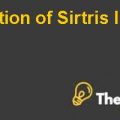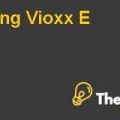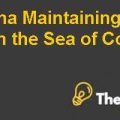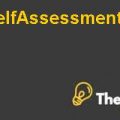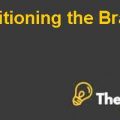The Boeing 7E7 Case Solution
QUESTION NO 1:
The calculated IRR for the project is 15.7%.This rate of return is calculated by taking the effect of forecaster free cash flows of the project. The assumption taken in account was that ‘Dream line’ aircraft would provide 16% return i.e. the IRR to the investors. The forecaster values for IRR which is streamlined with the assumed figure is 15.7%. It means that project would be feasible if it would fetch above 15.7% return from the investor prospect, and maintaining the units sold over and above 2500. Thus by getting 5% premium above the minimum assumed price project would be feasible.
But IRR analysis shows risks as well, if different variations are considered for the project i.e. cost of construction, development costs, design cost and production costs as well. Some other factors might also hinder the performance of the Airbus.If the travel demand gets worsened or any other company enters the market with the new competitive product.
By considering all the above factors, the IRR should be 15.7 % or above for the prospective years, and by this the project’s viability increases.
QUESTION NO 2:
The beta used in the analysis (refer excel sheet), is the beta given in the case study in exhibit no. 10. The choices available to use beta factor to evaluate the risk in the project comprises of:
The beta for 60 months, 21 months and 60 trading days. The beta used in the analysis is for 60 months. The reason for using it in the analysis is the fact that airline industry invests in manufacturing new jets on long term basis. The pros and cons of investing the venture must be evaluated in long-term. The betas for the lesser time duration are volatile, and cannot epics the truer risk which company might face after investing into this venture.
The selection is made from S&P 500 index values, because the values by them are more authentic and reliable. Analyst mostly considers their values for determining the financial viability of the projects. The figures from the financial data of the companies under the same industry are not considered,because most of the revenues of such companies are driven from government. Hence BOEING is earning only 46% of the revenue from government sectors. To make the analysis clear and uniform. The averages of the comparable figures are not considered. Correspondent market risk premium and other variables are used from the available sources in the light of beta determined.
QUESTION NO. 3:
The cost of debt is determined by using the figures extracted from the financial data of the company is given in the excel sheets.
The Boeing 7E7 Harvard Case Solution & Analysis
QUESTION NO 4:
The weighted average cost of capital is calculated (refer Excel sheet).
The composition of debt and equity i.e. the relative weights used in the calculation are extracted from the financial data given in the case study under the heading of exhibit 10. The proportions of debt and equity are also calculated with their relative percentages from the balance sheet of the company as well. The percentage used in the analysis is taken from the exhibit 10 as calculated under special considerations.Which shows the market value of debt/equity ratio for Boeing, thus for the financial evaluation, this percentage is considered for calculating WACC In our analysis.................
This is just a sample partial case solution. Please place the order on the website to order your own originally done case solution.

